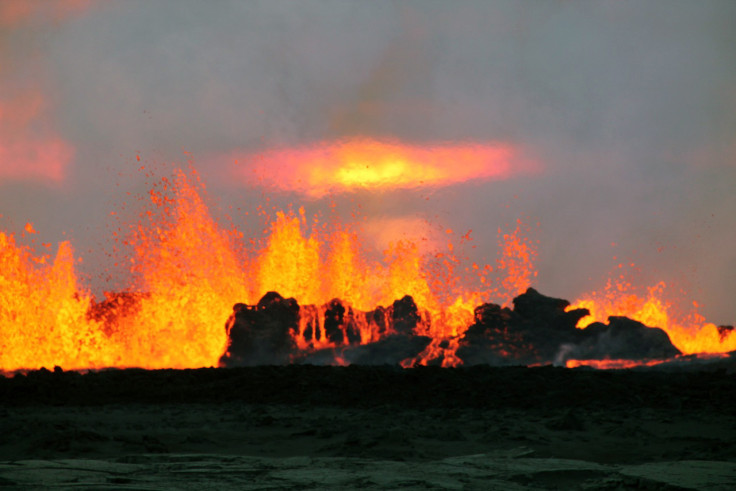Bardarbunga volcano eruption of 2014 created the biggest caldera formation ever observed
Scientists get unprecedented view of poorly understood process of caldera formation.

The 2014 eruption of Iceland's Bardarbunga volcano was the biggest seen in Europe for almost a quarter of a century. It was also the biggest caldera formation event ever observed by scientists – a process that could shed light on other, potentially catastrophic events, like an eruption at the Yellowstone supervolcano in the US.
Bardarbunga provided geologists an unprecedented view into how calderas (holes volcano eruptions leave behind) form. Scientist know they are created from the collapse of subterranean magma eruptions during eruptions. However, because they rarely form, direct observations are limited and our knowledge is limited.
In a study published in Science, an international team of researchers looked at the eruption of Bardarbunga and how the caldera it left behind formed. Using satellite images, GPS and seismological and geochemical data, the team showed how subsidence was triggered by the intrusion of magma from a reservoir lying 12km beneath the surface.
Magma flowed for 45km before erupting at the northeast of the volcano. Over six months, the caldera grew, having been accompanied by 77 earthquakes. Eventually, it reached the size we see today – 8km by 11km wide and 65m deep.

"With an area of 110sq km, this is the largest caldera collapse ever monitored. The results provide the clearest picture yet of the onset and evolution of this enigmatic geological process", said Eoghan Holohan, one of the study authors.
The magma chamber studied sits under Europe's biggest glacier – Vatnajoukull – so the caldera eventually filled with ice. Thomas Walter, another author, said: "The event was a blessing in disguise as the eruption could have happened directly beneath the ice. In that case, we'd have had a water vapour explosion with a volcanic ash cloud even bigger and longer lasting than the one that followed the eruption of Eyjafjallajokull in 2010."
Understanding caldera formation will help provide a better grasp of other, more threatening volcanoes, including Yellowstone in the US and those in the Andes.
"Bardarbunga 2014-2015 provides our clearest picture yet of how caldera collapse can be triggered during large eruptions and how the dynamics of the subterranean magma flow path and the interaction with magma reservoir pressure regulates eruption rates and the rate of collapse," the authors conclude.
[EMBARGO 19:00 14 JULY]
© Copyright IBTimes 2025. All rights reserved.






















